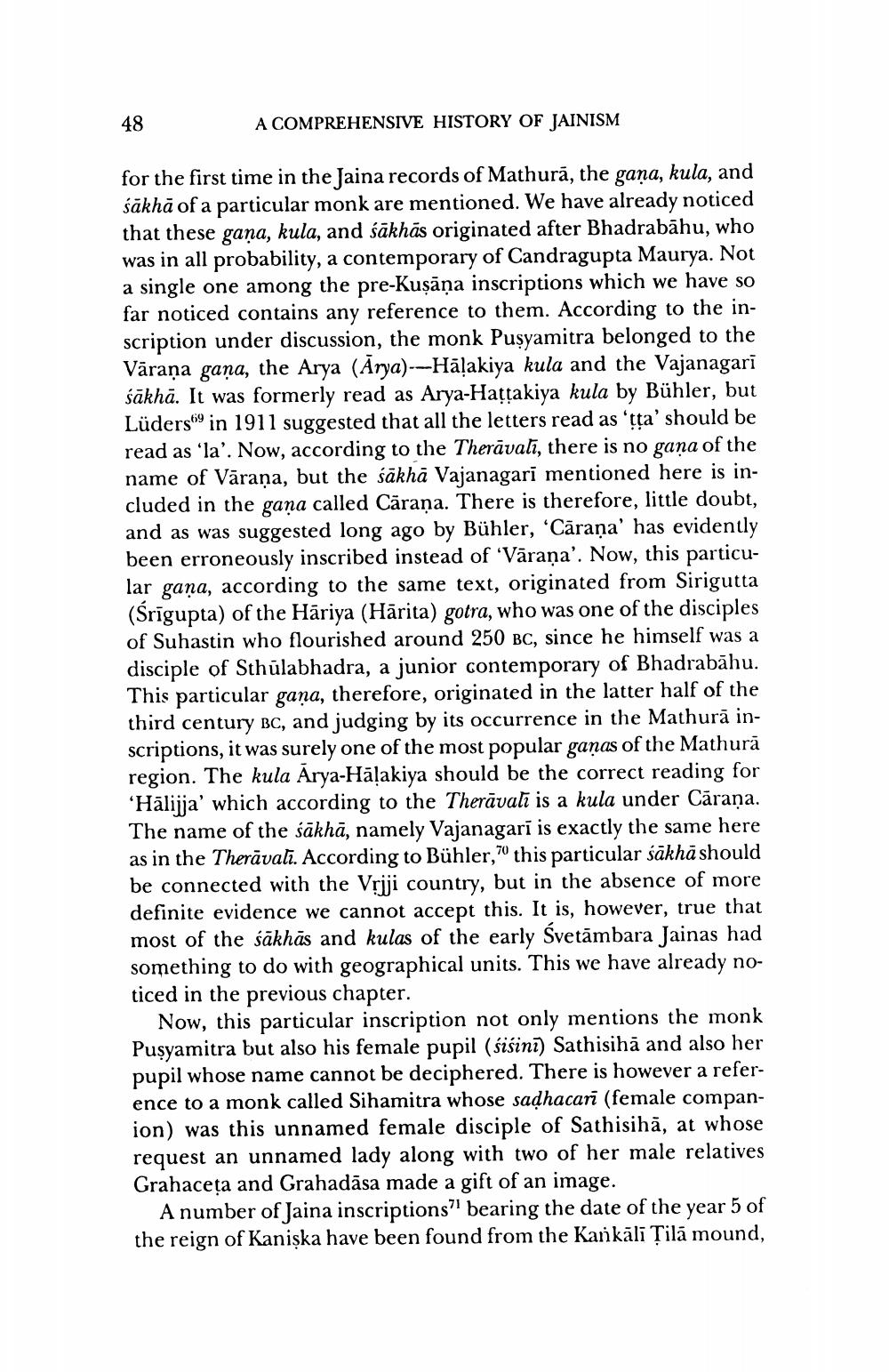________________
48
A COMPREHENSIVE HISTORY OF JAINISM
for the first time in the Jaina records of Mathurā, the gaña, kula, and sākhā of a particular monk are mentioned. We have already noticed that these gana, kula, and sākhās originated after Bhadrabāhu, who was in all probability, a contemporary of Candragupta Maurya. Not a single one among the pre-Kuşāņa inscriptions which we have so far noticed contains any reference to them. According to the inscription under discussion, the monk Puşyamitra belonged to the Vāraņa gaña, the Arya (Arya)---Hāļakiya kula and the Vajanagari sākhā. It was formerly read as Arya-Hattakiya kula by Bühler, but Lüders69 in 1911 suggested that all the letters read as 'țța' should be read as 'la'. Now, according to the Therāvalī, there is no gaña of the name of Vāraṇa, but the sākhā Vajanagari mentioned here is included in the gana called Cărana. There is therefore, little doubt, and as was suggested long ago by Bühler, 'Cāraṇa' has evidently been erroneously inscribed instead of 'Vāraṇa'. Now, this particular gaņa, according to the same text, originated from Sirigutta (Srīgupta) of the Hāriya (Hārita) gotra, who was one of the disciples of Suhastin who flourished around 250 BC, since he himself was a disciple of Sthulabhadra, a junior contemporary of Bhadrabāhu. This particular gana, therefore, originated in the latter half of the third century BC, and judging by its occurrence in the Mathurā inscriptions, it was surely one of the most popular ganas of the Mathur region. The kula Arya-Hälakiya should be the correct reading for 'Hālijja' which according to the Therāvalī is a kula under Cărana. The name of the sākhā, namely Vajanagari is exactly the same here as in the Therāvali. According to Bühler, this particular sākhā should be connected with the Vriji country, but in the absence of more definite evidence we cannot accept this. It is, however, true that most of the sākhās and kulas of the early Svetāmbara Jainas had something to do with geographical units. This we have already noticed in the previous chapter.
Now, this particular inscription not only mentions the monk Puşyamitra but also his female pupil (sišini) Sathisih, and also her pupil whose name cannot be deciphered. There is however a reference to a monk called Sihamitra whose sadhacari (female companion) was this unnamed female disciple of Sathisihā, at whose request an unnamed lady along with two of her male relatives Grahaceta and Grahadāsa made a gift of an image.
A number of Jaina inscriptions bearing the date of the year 5 of the reign of Kaniska have been found from the Kankāli Tilā mound,




